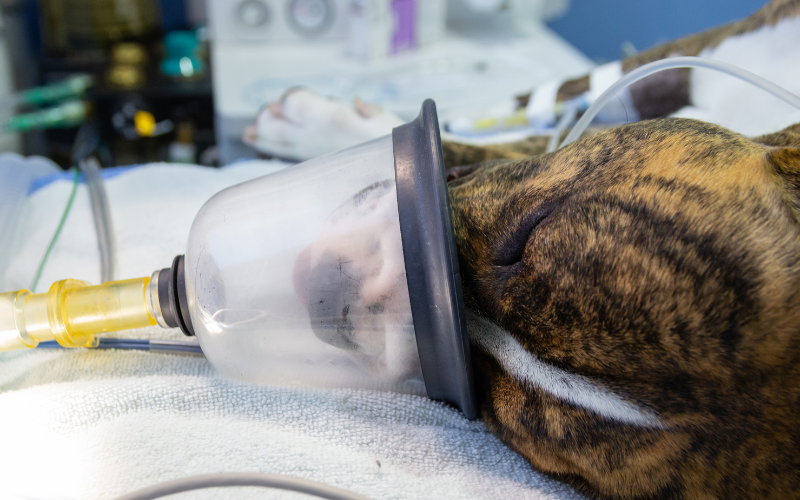Statistics show that by the time they are three years of age, over 85% of pets have some form of dental disease. It is a distressing problem and can lead to significant health issues like heart, kidney, liver, and untold discomfort.
But despite the great volume of dental products available (toothbrushes, toothpaste, chew sticks, etc.) and annual exams from a primary care veterinarian, why is there still a high level of dental disease in pets?
Worries about anesthesia safety may be a factor preventing some pet owners from following through with veterinarians’ recommendations for professional dental care. As February is National Pet Dental Health Month, it’s the perfect time to look closer at what makes anesthesia necessary and a very low-risk part of effective pet dental health.
Why is Anesthesia Necessary for Dental Procedures?
The use of general anesthesia in dentistry has been a topic of great discussion over the past few years, with anesthesia-free dental cleanings being advertised as a safe and viable way to keep your pet’s oral cavity clean. However, according to the 2019 AAHA Dental Care Guidelines for Dogs and Cats, anesthesia-free dentistry is neither safe nor as effective as the level of dental care provided in an anesthetized patient.
In anesthesia-free dental cleanings, only the visible tartar is removed from the teeth, which does nothing to address the disease-causing buildup under the gumline. In addition, this cosmetic-only “polishing” creates a false sense of security for pet parents and prevents pets from receiving more effective treatment that is critical for the pet’s oral health. Even a simple tooth scraping usually means heavy physical restraint for your pet, which can be stressful and painful and can sometimes result in injury.
Properly and safely using general anesthesia is the only way to thoroughly examine, diagnose, and treat the diseases that can reside in your pet’s mouth. It allows your veterinarian to view and probe under and around each tooth to check for infection and gingivitis and take comprehensive x-rays to view the large portion of the tooth and root not visible to the eyes. In addition, they can only effectively remove plaque, bacteria, and tartar that reside under the gumline when a pet patient is under general anesthesia.
How BEVS Makes Anesthesia Safer for Your Pet
The team in the BEVS’ Dentistry Department takes many precautions to ensure a safe and pain-free experience for your pet before, during, and after procedures. We will work with you and your family veterinarian to tailor an individualized anesthetic and pain management plan that works for your pet. This includes:
- A thorough pre-anesthetic exam and lab work to ensure that your pet’s organs function well. In particular, the kidneys and liver are assessed since they metabolize anesthetic medications. In addition, blood work can detect any underlying disease that might cause anesthetic complications. This pre-op evaluation allows our department head,Dr. Bill Kellner, to tailor your pet’s individualized anesthetic and pain management plan.
- Pets with heart abnormalities, respiratory issues, or some older pets also need to have pre-anesthetic chest x-rays or echocardiograms.
- Placing an intravenous catheter, which allows us to ensure your pet stays hydrated and that their blood pressure remains stable throughout the procedure. IV access also allows us to deliver life-saving medications should a rare anesthetic complication occur.
- Sedation, to relax your pet and relieve any anxiety. After about 20 minutes, your pet will be anesthetized.
- Airway placement of an endotracheal tube to protect the lungs and deliver oxygen throughout the procedure.
- Continuous monitoring of all vital signs by a highly trained and experienced veterinary technician from the moment anesthesia begins until your pet is completely awake and recovered.
While some anxiety about anesthesia is understandable, the long-term consequences of putting off diagnosis and treatment of periodontal disease or dental care can be painful for your pet and very costly for you. Additionally, for almost all pets, the risks of anesthesia are very low in light of our high standards of care and expertise. As practices have become more modern and advances in veterinary care continue to grow, we hope pet parents now realize that we can provide veterinary dentistry at a much higher level than ever before.
If you have questions about advanced dentistry for your pet, or are concerned about anesthesia, please don’t hesitate to contact us

